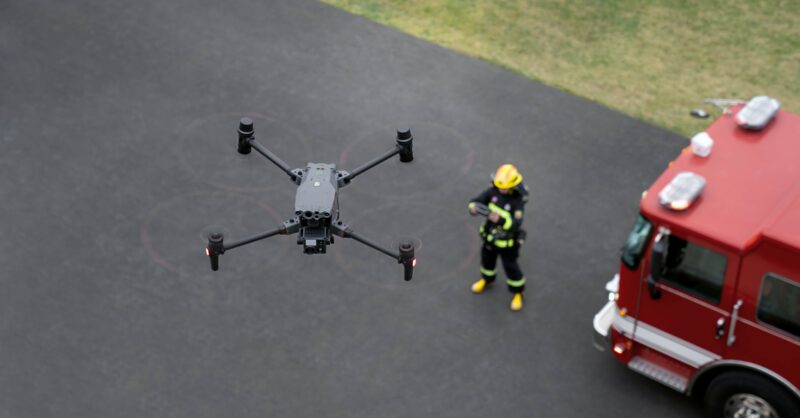As the UK government faces mounting pressure to streamline public spending, the integration of drone technology emerges as a promising avenue for enhancing public services and driving significant economic gains. In a recent roundtable discussion hosted by the New Statesman and DJI, leading figures from industry and government explored the transformative potential of drones across various sectors, emphasizing their role in boosting efficiency, innovation, and cost-effectiveness.
The Economic Potential of Drones
According to estimates by PwC, drone technology could unleash up to £45 billion in productivity gains within the UK. This staggering figure underscores the profound impact that drones could have, not only in terms of economic growth but also in reshaping public service delivery. The Labour government, with its focus on digital innovation and sustainable solutions, is well-positioned to capitalize on this opportunity through the UK’s Future of Flight Action Plan, which aims to advance aerial solutions for transportation, healthcare, and emergency response services.
The roundtable highlighted how drones are already enhancing public services by enabling early fault detection on rail networks, potentially saving Network Rail £1 million per incident. In the emergency services sector, drones have drastically reduced response times, offering a cost-effective alternative to traditional methods like police helicopters. In healthcare, particularly in rural areas, drones are facilitating faster and more efficient delivery of medical supplies.
Addressing Regulatory and Operational Challenges
Despite these opportunities, several barriers must be addressed to fully integrate drones into public services. One major hurdle is the slow and complex regulatory approval process, especially for advanced operations like Beyond Visual Line of Sight (BVLOS) flights. This lengthy process hampers growth and limits the scalability of drone operations. Participants called for streamlining the BVLOS approval process to accelerate drone adoption in public services.
Another challenge is the lack of a centralized framework for drone usage in the public sector. Currently, local councils and emergency services deploy drones inconsistently, which hinders operational effectiveness. Establishing a national management structure to coordinate best practices and streamline approvals is essential for ensuring uniformity and greater efficiency.
Building a Skilled Workforce and Public Trust
Skills shortages in drone operation pose another challenge. Introducing drone training in college curricula was proposed as a solution to create a pipeline of skilled workers ready to meet the growing demand for drone operators. Addressing public perception is also crucial, as drones are often associated with military surveillance or privacy concerns. Positive case studies in healthcare and emergency response can help shift perceptions and build greater public trust.
Strategic Funding and Investment
To unlock the full potential of drone technology, strategic funding and investment are essential. Systems like Unmanned Traffic Management (UTM) require government support to facilitate more advanced drone operations, such as BVLOS and autonomous flights in controlled airspace. In some countries, government-linked Air Navigation Service Providers (ANSPs) have demonstrated a willingness to invest ahead of the industry, setting a precedent for similar public investment in the UK.
Practical Steps and Recommendations
To drive drone adoption, the roundtable recommended several key policy solutions:
The roundtable concluded with a call for regulatory changes, strategic funding, and better coordination to drive drone adoption across the public sector. Attendees agreed that, with targeted efforts, drones could significantly enhance efficiency, reduce costs, and improve service delivery, positioning the UK at the forefront of the global drone economy.
